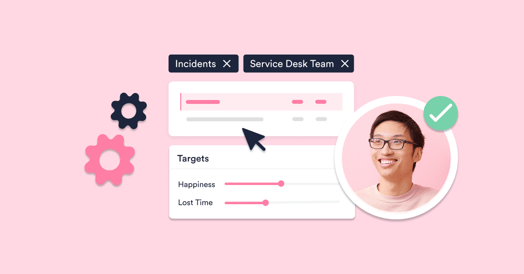Dealing with the Major Objections to XLAs
This blog considers eight possible, sometimes probable, objections to XLAs and how best to handle them.

Your IT organization has decided that using experience level agreement metrics and targets (XLAs) will benefit its IT operations and the business outcomes they enable. However, before adding XLAs to the current IT metrics portfolio, it’s worth understanding and addressing the likely objections to their introduction. These objections are expected, given that introducing XLAs changes the IT status quo, and few people accept change with open arms!
The objections will likely manifest in employee resistance to changing the existing service level agreement (SLA)-based performance measurement system. This is partly caused by people not understanding how XLAs differ from SLAs (and the additional benefits they bring). It might also be caused by historical SLA issues that make IT performance metrics a “touchy subject” across the organization.
To help, this blog considers eight possible, sometimes probable, objections to XLAs and how best to handle them.
XLA objection #1: “We don’t want more paperwork”
For many people, the term “XLA” initially referred to experience level agreement documents, just like the term “SLA” referred to SLA documents. However, the operational reality is that the term SLAs came to refer to service level targets contained within the SLA documents. For example, when an IT service management (ITSM) tool vendor offers SLA management capabilities, this refers to using SLA targets, not creating SLA documents.
What to do about it
Simply explain that the use of “XLA” refers to experience metrics and targets, not the creation of SLA-document-like XLA documents. Hence, no one should be worried about creating even more paperwork.
XLA objection #2: “XLAs are too new a concept for us to adopt them”
Your IT or wider organization might be late adopters of new concepts and technologies, making people (in IT and the wider business) risk-averse when introducing XLAs. This “Let’s wait until XLAs are proven best practice and included in industry guidance such as ITIL” perspective could be a significant barrier in your organization.
What to do about it
First, significant industry insight is already available to show that other organizations are making a significant difference through their use of XLAs. This can be used to demonstrate the value of XLAs. Second, because employee experience can be a competitive differentiator, there’s an argument that failing to be a relatively early adopter of ITXM and XLAs will adversely affect your organization’s competitive position (from both an operational and recruitment perspective).
XLA objection #3: “We don’t want to replace our SLAs; they work”
People might think it’s an “XLAs versus SLAs” battle, with an XLA initiative seeking to replace the existing SLAs.
What to do about it
Explain that when XLAs were first discussed in an IT context, there was talk of them being SLA replacements. This applied to both XLA documents and experience metrics. However, as the concept matured, the focus changed to XLAs supplementing existing SLAs. The objection can be further soothed through the HappySignals ITXM Benchmarks, which highlight the many issues that SLAs miss.
XLA objection #4: “XLAs are subjective”
SLAs, which both IT staff and the people they serve are now used to (even if they don’t like them), are usually based on quantifiable data. However, XLAs are often subjective measures of experience. This subjectivity can make prospective XLA results difficult to “believe,” given that they are end-user opinions rather than something “spat out of a machine.”
What to do about it
There are two perspectives on this difference. Both can be used to deal with the related XLA objection. First, articulate the gap between what SLAs report and what people say about the IT services and support they receive. This gap highlights the problem with existing IT metrics, with SLAs missing many of the issues that cause employees frustration, pain, and lost productivity. Second, explain that the high volumes of end-user feedback captured via experience management can’t be ignored – it’s the consensus of what’s working well and what isn’t.
XLA objection #5: “We don’t need XLAs – we’re investing in AI, that will deliver better experiences”
Many IT organizations are already focused on the potential applications of artificial intelligence (AI) within their operations and broader business opportunities. The benefits include better employee experiences, so why is ITXM needed?
What to do about it
There’s no doubt that AI has the potential to deliver “better, faster, cheaper” operations and outcomes if applied correctly. However, the last three words in the previous sentence are critical. How can your organization ensure that AI “is applied correctly”?
Experience management data and insights help with this. It shows what end-users think of existing IT services, allowing the prioritization of AI investments on what will make the most significant difference. It also helps measure the end-user and operational impact of new AI capabilities so course correction can be made as needed.
XLA objection #6: “You’ll just make the same mistakes with XLAs as you did with SLAs”
XLA objectors could have a point here. IT organizations have long made errors with their use of service level targets. For example, insufficient customer involvement, blindly using “best practice” metrics, and focusing on what’s easy to measure, not what’s most important.
What to do about it
Articulate that the common issues with SLA adoption are well known (or are at least well documented). Plus, it’s critical to stress that XLAs will focus on “what matters most” to employees and other business stakeholders, avoiding these common issues.
XLA objection #7: “Our people don’t want to be spied on”
Collecting employee experience data can raise privacy concerns, especially if it includes sensitive or personally identifiable information (PII). Also, IT staff might see using XLAs as intrusive in terms of more people feeding back on their performance.
What to do about it
While organizations must ensure that their XLA practices comply with data protection regulations and respect employee privacy, it’s essential to sell the benefits of ITXM to the IT staff affected using organizational change management (OCM) tools and techniques. For example, the “What’s in it for me?” of collecting experience data and creating insights, i.e., how people will benefit from the data personally and as a team.
XLA objection #8: “We can’t afford additional tools”
When IT organizations are looking to save rather than spend money, the costs of new technology to support XLAs (and the associated changes to performance measurement processes and people costs) can be objected to.
What to do about it
As with problem management, the upfront and ongoing costs of XLAs should be viewed as the proverbial “spending a penny to save a pound” (or whatever your local currency equivalent is). Introducing XLAs is an investment in better IT operations and business outcomes. The actual return on investment (ROI) can be calculated post-introduction, with industry data used to estimate the expected financial benefits and ROI where a business case is required.
If you want to learn more about moving from SLAs to XLAs, please see here.
Related content

12.04.2023
Why Experience Management is Needed
You might have heard, “The king is dead; long live the king!” The same applies to service level agreements (SLAs) and ...
Read more >
09.03.2023
SLAs Are Not Enough: Why Your IT Organization Needs XLAs
IT service management (ITSM) best practice guidance such as ITIL has long espoused the need for service level ...
Read more >
